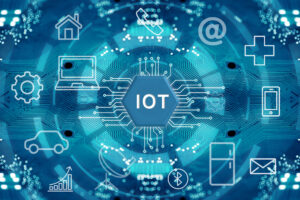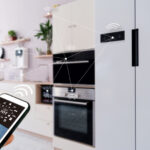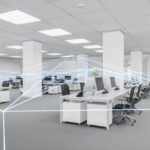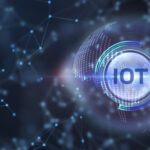
That’s just one example of how Internet of Things (IoT) devices have proven useful as people around the world seek to combat the COVID-19 pandemic. These internet-connected devices – which assist with the collection, transfer, analysis and storage of data – have incredible potential as a way to deliver vital care, carry out disinfection and overall perform important tasks while still staying socially distant.
The IoT Before and After the Pandemic
The network of smart devices installed in homes, office buildings, factories and other spaces around the world has ballooned in recent years as we seek to automate and streamline various processes. These gadgets can tackle a wide range of tasks, from watching for visitors or intruders at the front door to monitoring the temperature in restaurant walk-in freezers, according to the EHSToday article “How IoT is Helping Businesses Adapt to Pandemic-Related Disruption.”
In 2019, Gartner predicted that the enterprise and automotive IoT market would grow to 5.8 billion endpoints in 2020, a 21 percent year-over-year increase. Of course, the coronavirus pandemic has since made its mark on the IoT market.
For example, downloads of apps for some consumer IoT devices have declined, indicating dwindling interest in those items, according to the IoT Analytics article “The impact of Covid-19 on the Internet of Things – now and beyond the Great Lockdown: Part 1.” Philips Hue – a company that creates smart lights you can control with a smartphone or tablet – saw its app drop in rank from No. 233 to No. 351 between Jan. 31, 2020 and April 6, 2020.
On the other hand, remote access and control capabilities have become vital in this era of social distancing and quarantining. For instance, usage of Librestream’s Onsight Connect remote expert software – which gives end users the ability to carry out inspections and other tasks from afar – doubled between February and March of this year, IoT Analytics reports.
Most importantly, internet-connected devices have emerged as valuable tools for empowering healthcare providers as they seek to treat COVID-19 patients while minimizing the risk of infection for staff members.
IoT Applications for Healthcare Providers
In addition to taking patients’ temperatures like the drone mentioned at the beginning of this blog entry, IoT devices can make treating patients with the coronavirus easier and safer for healthcare providers by performing numerous other tasks. Here are just some of the notable applications for the IoT during the pandemic, according to the article “Internet of things (IoT) applications to fight against COVID-19 pandemic” and IoT Analytics.
- Internet-connected medical devices can monitor and relay real-time data related to vital signs like heart rate and blood pressure, minimizing the human contact necessary between healthcare staff and infectious patients.
- Drones can deliver medical supplies, broadcast essential information in public spaces and carry out necessary disinfection. For example, the Chinese agricultural tech company XAG launched a drone disinfecting project earlier this year, according to the Health Europa article “XAG introduces drone disinfection operation to fight the coronavirus outbreak.”
- IoT devices can aid in telehealth consultations for patients in remote areas.
Ultimately, as we seek to help those affected by COVID-19 while still limiting the spread of the virus, these smart devices that can facilitate proper cleaning and care while minimizing human contact have proved extremely useful.
IoT Devices and Security Concerns
Although IoT devices can improve our lives in myriad ways, they also create new points of vulnerability that cybercriminals could potentially exploit to gain access to sensitive data. Almost all (98 percent) of IoT device traffic is unencrypted, and 57 percent of the devices are vulnerable to cyberattacks of either medium- or high-level severity, according to the 2020 Unit 42 IoT Threat Report from Palo Alto Networks.
As a result, any organization leveraging IoT devices should ensure data privacy and security with solutions like network and endpoint Managed Detection and Response (MDR) as part of a comprehensive cybersecurity strategy.
If you’d like to learn more about Internet of Things devices, their many applications in healthcare and other industries, and how to address IoT-related cybersecurity risks, feel free to reach out to our team of tech experts. Just give us a call at 877-599-3999 or email sales@stratospherenetworks.com.


